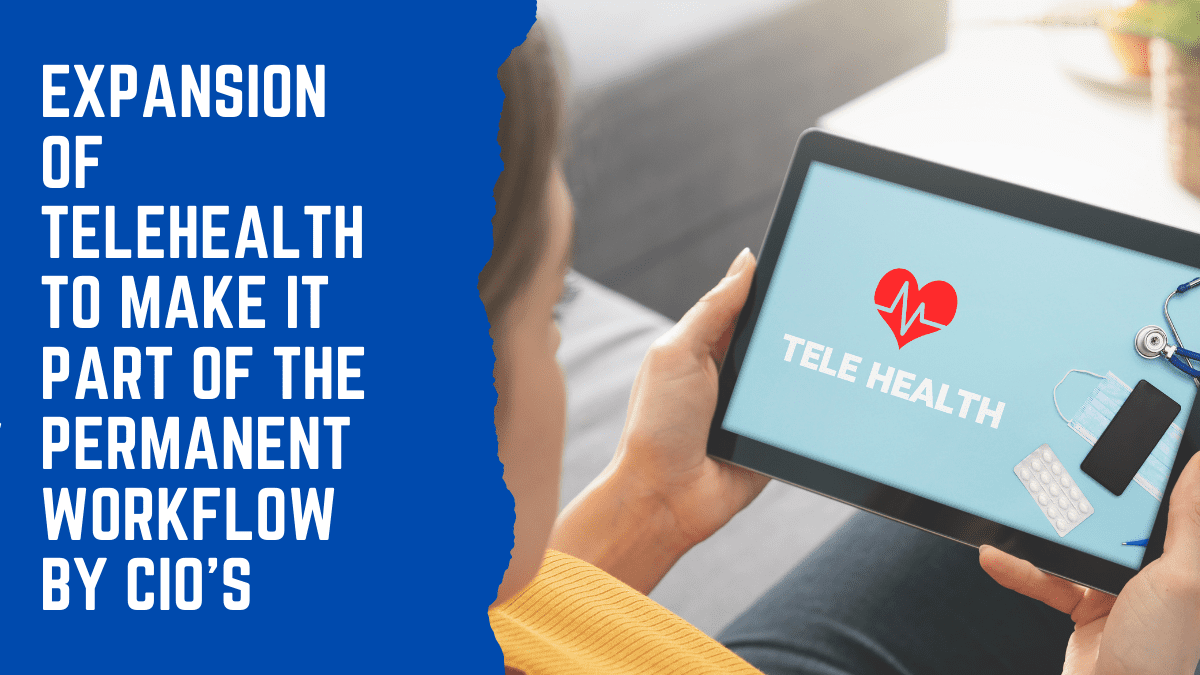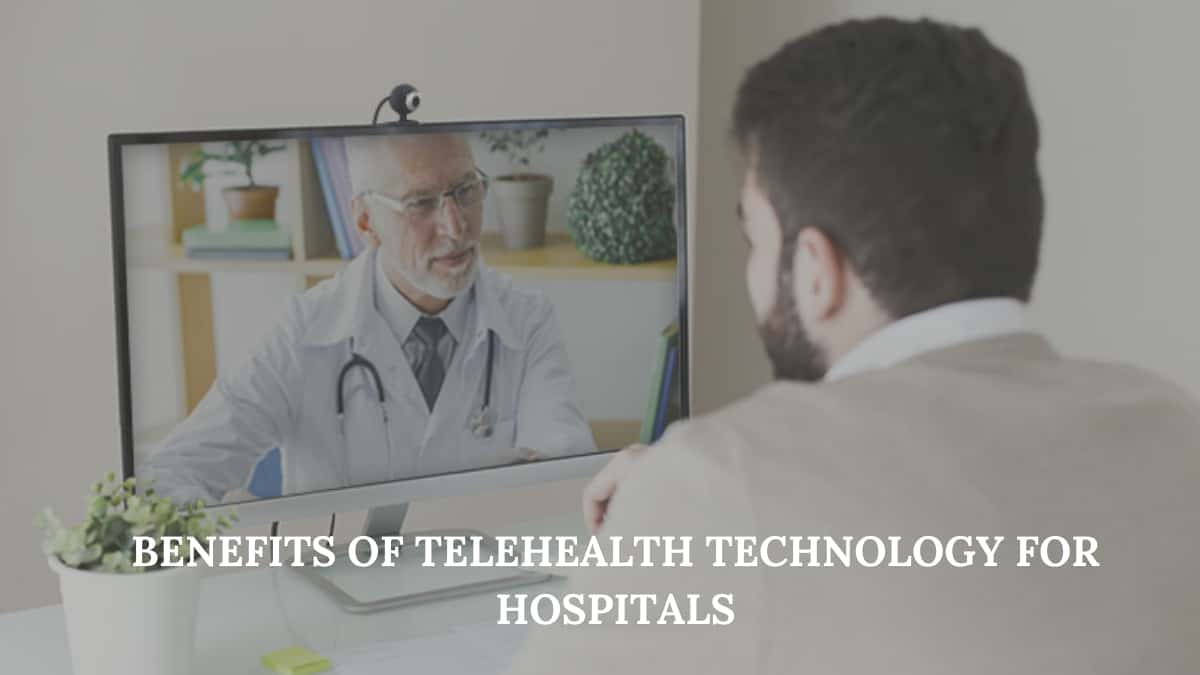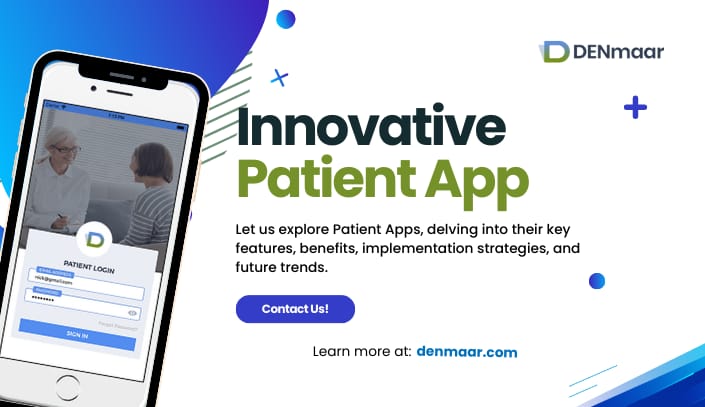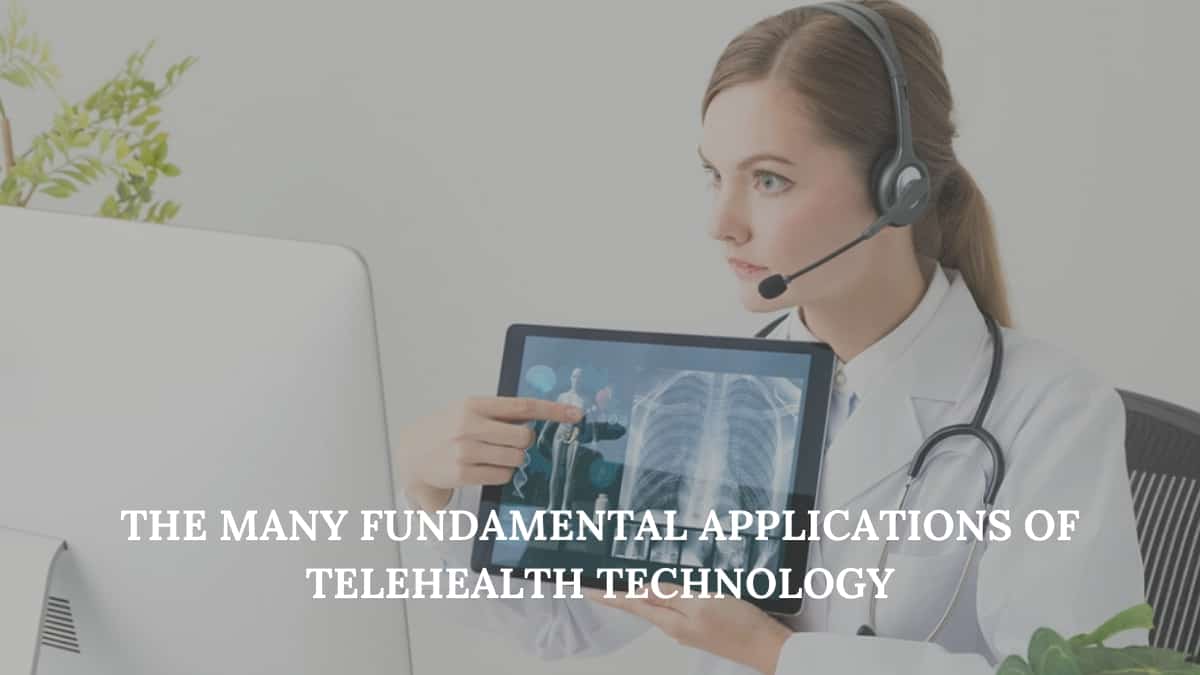
Expansion Of Telehealth To Make It Part Of The Permanent Workflow By CIOs
Over the past two years, hospitals and health systems have quickly deployed several telemedicine systems to look after patients during the ongoing Covid-19 pandemic. But unfortunately, many of these systems were not planned in great detail or designed with a view to sustainability.
Nonetheless, telehealth has taken root, and now healthcare providers face the future with mixed care: personal care and virtual care. As a result, providers are starting to think more about their applications of telemedicine technology.
CIOs and other health IT leaders are thinking about implementing health systems across hospitals and enabling doctors to use technology in their current workflow. Moreover, many officials are considering expanding the scope of technology in the hospital to include all departments.
Hospital’s technological needs have changed rapidly during pandemics, and many patient-facing systems are rapidly operating to meet the demand for video visits.
Hospitals seek permanent designs that are part of their workflow.
In the last few months, what happened across the country has been shocking and has led to telehealth’s emergence from most healthcare systems’ basements. The concept that was once considered a “pleasure” at the use-case level quickly became a “necessity” at the enterprise level throughout the patient’s journey.
Many realize that successful, integrated telehealth solutions are more than just doctors on-screen. Instead, when deployed comprehensively, they act as a digital front door to the health system, delivering clinical experiences and ultimately improving patient commitment.
Integrated care for the individual has been proven to prevent and reduce health risks, and you can use virtual care technology to improve care outside of a hospital setting.
Telehealth is no longer a separate component or competitive advantage for hospitals and health systems – it is a requirement and will provide financial benefits, improved reputation, and care.
Embedding system-wide telehealth technology as part of their ongoing workflow
Streamlining technical and administrative processes related to providing virtual care through modern and unified platforms will simplify the workflow and improve the care experience.
Combining technology and administrative processes reduces the administrative burden on platform users and increases communication and collaboration in the team.
A single platform promotes fewer login, screen, and apps and extended capabilities such as viewing appointments, accessing current patient information, and combining chat and video appointments with colleagues.
It is imperative to access the curated data presented as actionable insights on the same platform- This enables better personal care throughout the patient’s most needed journey.
Virtual access to patient’s room
How can CIOs and their team take advantage of this technology and expand it within the four walls of a hospital? For instance, in every department, or even on every TV screen in every patient’s room.
Equipping each patient’s room with telehealth capabilities and virtual access gives carers instant access to patients for various cases.
Virtual nursing units are an example of this idea. About two-thirds of nursing tasks, such as drug testing and some paperwork, are activities that do not need to be touched, and the caregiver does not need to be physically at the bedside.
By enabling each patient room in a virtual nursing unit with telehealth equipment, bedside nurses can focus on providing high-quality patient care by carrying the burden of non-functional care and administrative tasks. We have seen virtual nursing units that can discharge patients about 20% more than conventional nursing units within two hours of receiving a discharge order.
Furthermore, some of these units discharge patients 44% more in the afternoon than their traditional nursing counterparts. These metrics help increase productivity in opening rooms early to accommodate more patients and improve patient satisfaction.
It is also vital to note that patients often interact with people other than doctors and hospital caregivers. Virtual in-room care, often via a hospital room TV or another in-room device, can enable social workers or family members to communicate safely and efficiently with the patient while in the hospital.
Where to get the best telehealth solution?
DENmaar’s telehealth solution provides a quick and secure way to start a telemedicine session with the ease of a phone call. Whether starting with an electronic medical records system or a provider application, a click of a button prompts a patient to start a session.
DENmaar’s TeleHealth system is HIPAA compliant, providing a safe way for patients to quickly and safely provide treatment or prescribed services.
Telehealth, telemedicine, and telenursing are changing the world of healthcare forever as we know it. DENmaar is part of that change, and so can you. Call us today!
Related Posts
Benefits of Telehealth Technology for Hospitals
We know how important Telehealth technology has been in transforming health...
Transform Patient Care with Our Innovative Patient App: Your Health, Your Control
Technology has become a vital aspect of our daily lives, so it is no surprise...
The Many Fundamental Applications of Telehealth Technology
As the world struggles to recover from the tragedy of an ongoing pandemic,...
How to Expand Private Practice Using Telemedicine in 2022
Let’s face it, access to healthcare for millions would have been practically...




